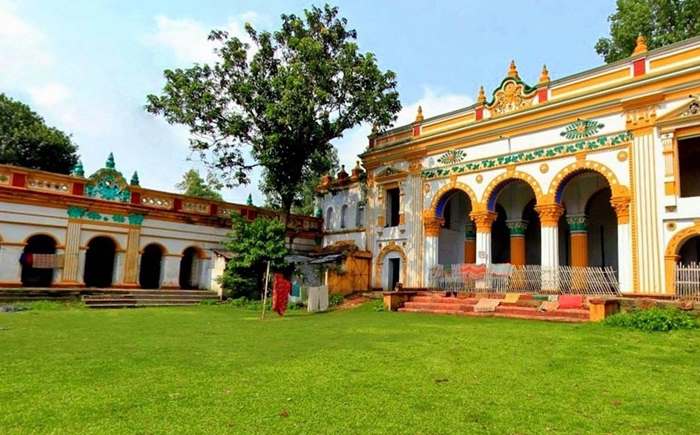11/22/2025 Dinajpur Rajbari

Dinajpur Rajbari
About BD
১ জুলাই ২০২৫ ১৯:০৪

Dinajpur Rajbari is nestled in the northeastern part of Dinajpur district, standing as a majestic testament to the region's rich heritage. Though officially named after its location—Rajbari—it was more fondly known as Raj Batika, a term that evokes images of royal splendor and timeless grace. Situated just east of the Dinajpur Central Bus Terminal, the palace once stood at the heart of aristocratic life. From 1608 to 1951, it proudly symbolized the prosperity and grandeur of the greater Dinajpur region, echoing the legacy of its noble past.
History
The origins of the Dinajpur Rajbari and the ancient kingdom of Dinajpur are attributed to King Dinraj Ghosh, a notable figure whose legacy still echoes through the region. While it is widely accepted that King Dinraj was the founder of both the palace and the kingdom, many historians believe that the architectural foundation of the Rajbari may date back even further—to the era of the renowned Raja Ganesh, who flourished under the reign of Ilyas Shahi in the early 15th century.
King Dinraj Ghosh, a Kayastha of the northern Radhiya class, served as a royal official under Gaudeshwar Ganeshanarayan (reigned 1414–1418 AD). The name of the kingdom—originally Dinrajpur, in honor of King Dinraj—gradually evolved into Dinajpur, shaped by the local Barendra Bengali dialect.
Strategically located near Gauda, the ancient capital of Bengal, the kingdom of Dinajpur rose to prominence after enduring and overcoming numerous conflicts with the Pathans, Mughals, and Nawabs. Its eventual establishment marked a permanent and powerful chapter in Bengal's regional history.
By the late 17th century, the stewardship of the estate passed to Shrimanta Datta Chowdhury, who assumed the role of zamindar of Dinajpur. Following the untimely death of his son, the inheritance shifted to his nephew, Sukhdev Ghosh, ensuring the continuity of the estate's lineage and influence.
Present Condition
After the abolition of the zamindari system in 1951, the grandeur of the Dinajpur Rajbari began to fade. Once a symbol of power and prestige, the palace gradually lost its former glory. The last zamindar of Dinajpur, Jagadishnath, passed away in Kolkata in 1962. Today, the Rajbari stands as a silent witness to the passage of time—a monument to a bygone era
The palace complex houses several notable structures, including the Kumar Mahal, Ayana Mahal, Rani Mahal, Lakshmi Ghar, Atchala Ghar, Thakur Bari, Kaliya Jiu Temple, Atur Ghar, Rani Pukur, and the Chhapatala Dighi. Each of these structures reflects the artistic and architectural richness of the era.
In addition, many historical artifacts once used by the royal family have been preserved and are now housed in the National Museum in Dhaka and the Dinajpur Museum, offering a glimpse into the opulence and cultural legacy of the Dinajpur royal lineage.
যোগাযোগ: হাশেম ম্যানসন, লেভেল-১, ৪৮-কাজী নজরুল ইসলাম এভিনিউ, তেজগাঁও, ঢাকা-১২১৫
মোবাইল: +৮৮ ০১৬৮২ ৫৬ ১০ ২৮, +৮৮ ০১৬১১ ০২ ৯৯ ৩৩
ইমেইল: aboutbd360@gmail.com